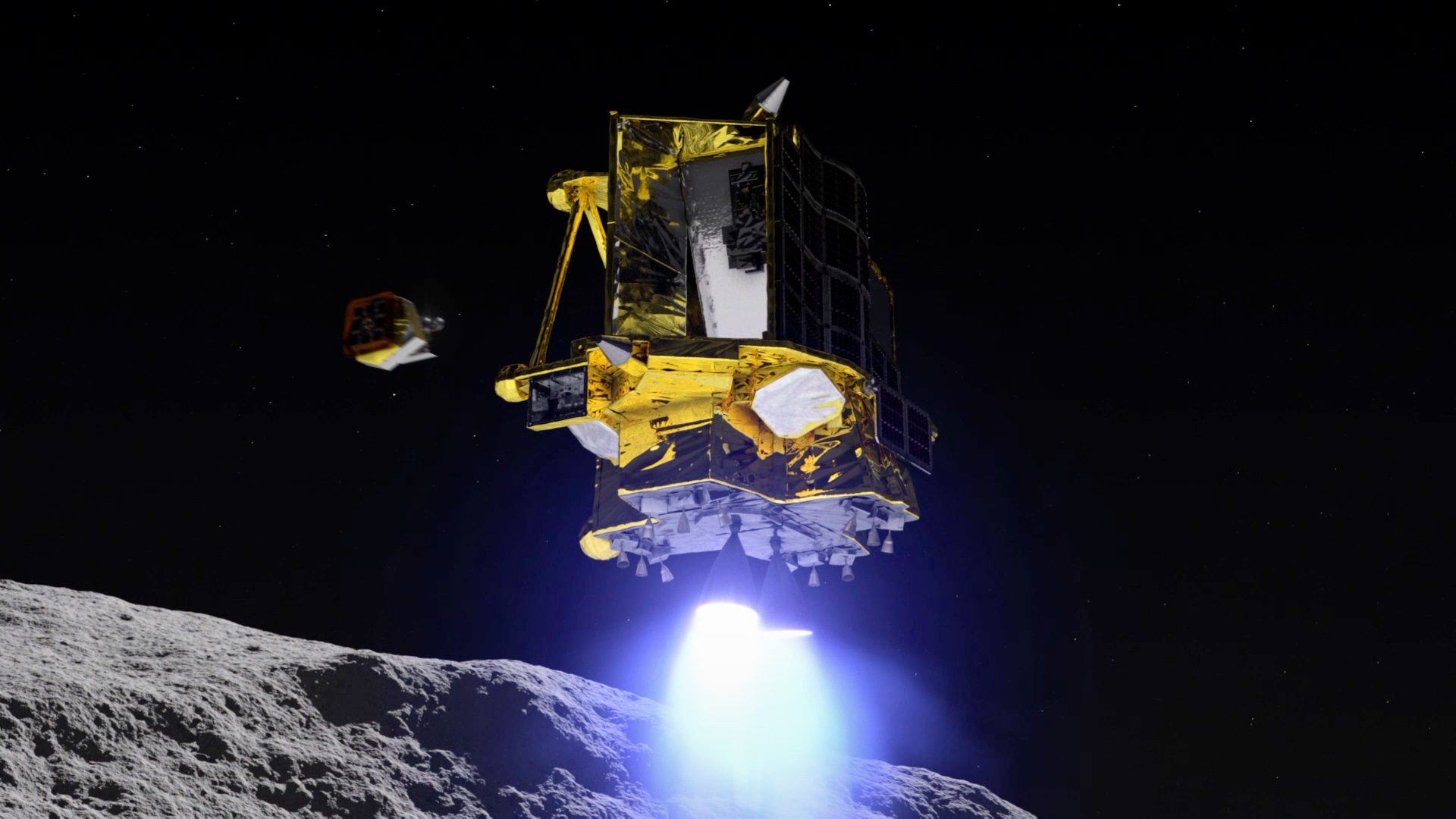Japan’s long-planned Smart Lander for Investigating Moon has successfully touched down on the lunar surface, making the nation the fifth in history to do so. But all is not well for SLIM, which may have a limited lease on life due to trouble with its solar cells.
In a press conference following the early-morning (local time) landing on the moon, the directors of JAXA and the mission explained that “the soft landing was itself successful; SLIM has been communicating and it receiving commands. However, it seems the solar cell is not generating electricity at this point in time.”
Solar cells can be finicky, as can the rest of the electrical workings in a space — let’s be honest, the whole thing is usually pretty finicky — so the team hasn’t yet been able to identify the issue. However, as the other sensors are working correctly and showing healthy values, they feel confident it is limited to the solar cells themselves.
Running on battery is of course not a long-term solution, and if they do not manage to get the cells online, the main lander will only have a few hours of life (and may in fact at this time already be reaching the end of that).
The country and agency must be congratulated on their accomplishment; landing on the moon is no easy feat and indeed multiple nations and private companies have made attempts in the last few years, none of which have succeeded. Something as small as a stuck valve (as in Astrobotic’s recent mission) can derail a lunar bid.
There is some speculation based on telemetry that the lander may have tipped or otherwise be in some non-optimal physical configuration, but so far JAXA does not have any confirmation of this. The initial press conference was primarily to announce the initial success of a soft landing and functioning lunar lander.
The team did note, however, that the two Lunar Excursion Vehicles carried by SLIM appear to have successfully deployed. These two sub-craft popped off the main vehicle while it hovered a few meters above the surface, and will operate semi-independently from it.

Render of how the deployment of LEV-1 might look during landing. Image Credits: JAXA
LEV-1 and LEV-2 (as they are called) ought to be able to capture images of the landing area and SLIM itself, but “unfortunately it is not something we are able to show you immediately,” they said. Assuming the sub-vehicles are functional, they should send along that info shortly.
This story is developing, we will update it as new information from JAXA is made available.
